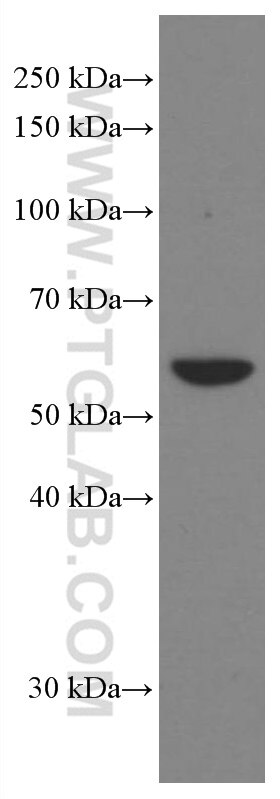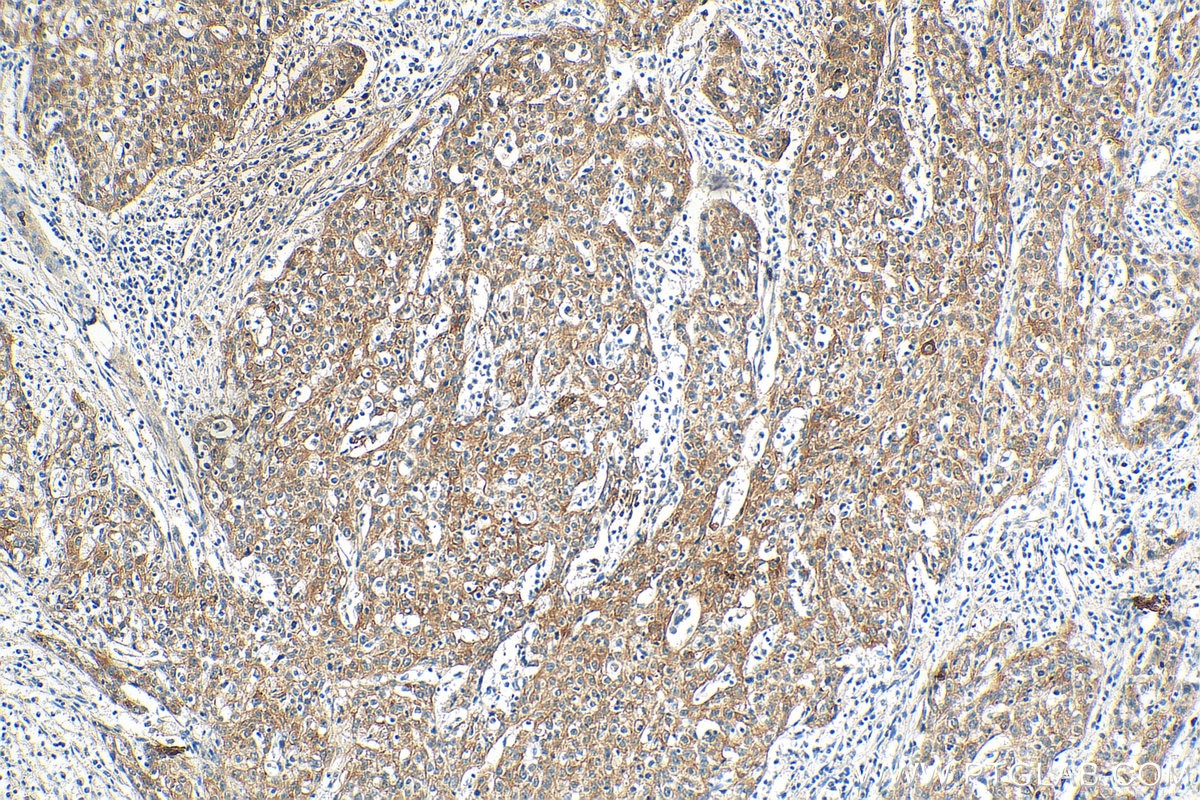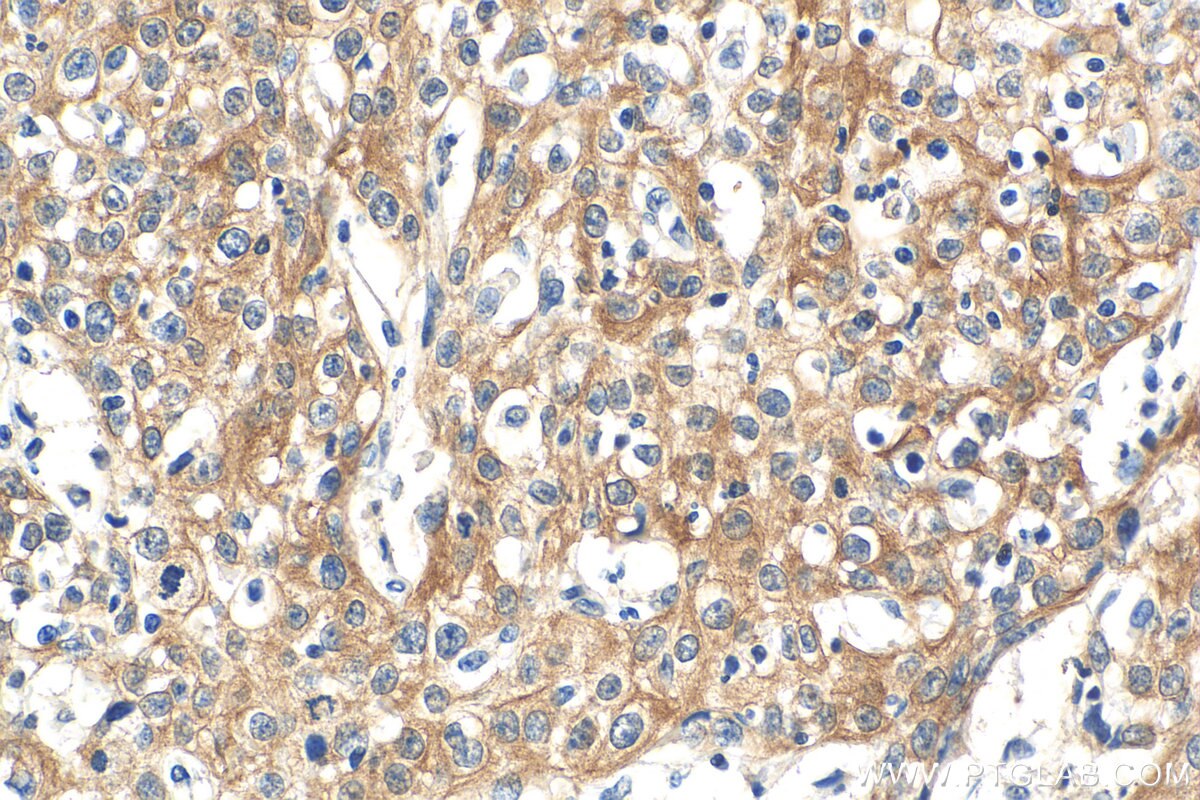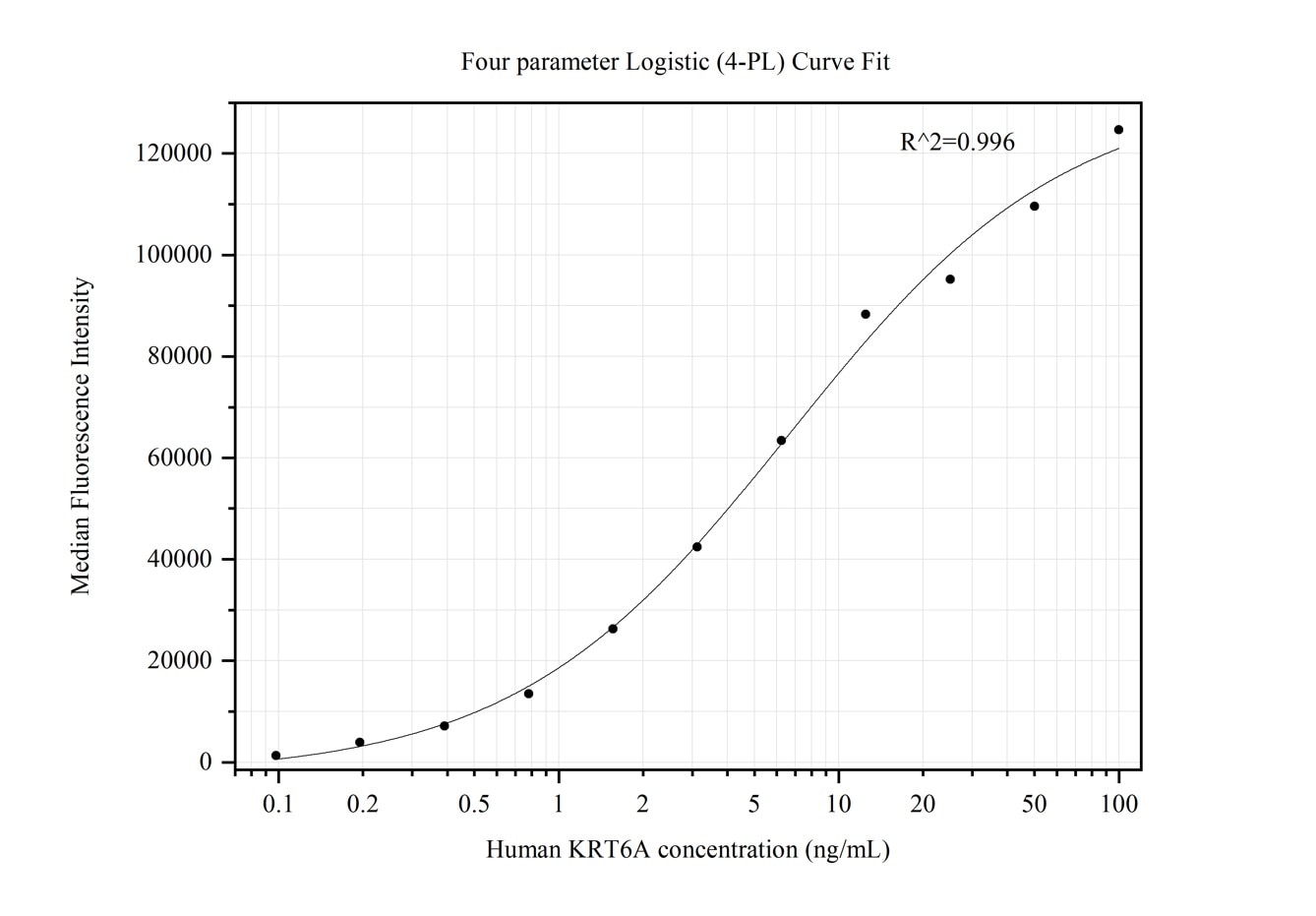Product Information
66685-1-PBS targets Cytokeratin 6A as part of a matched antibody pair:
MP50382-1: 66685-1-PBS capture and 68294-2-PBS detection (validated in Cytometric bead array)
Unconjugated mouse monoclonal antibody pair in PBS only (BSA and azide free) storage buffer at a concentration of 1 mg/mL, ready for conjugation.
This conjugation ready format makes antibodies ideal for use in many applications including: ELISAs, multiplex assays requiring matched pairs, mass cytometry, and multiplex imaging applications.Antibody use should be optimized by the end user for each application and assay.
| Tested Reactivity | human |
| Host / Isotype | Mouse / IgG1 |
| Class | Monoclonal |
| Type | Antibody |
| Immunogen | Cytokeratin 6A fusion protein Ag0882 Predict reactive species |
| Full Name | keratin 6A |
| Calculated Molecular Weight | 60 kDa |
| Observed Molecular Weight | 60 kDa |
| GenBank Accession Number | BC008807 |
| Gene Symbol | Cytokeratin 6A |
| Gene ID (NCBI) | 3853 |
| RRID | AB_2882039 |
| Conjugate | Unconjugated |
| Form | Liquid |
| Purification Method | Protein A purification |
| UNIPROT ID | P02538 |
| Storage Buffer | PBS only , pH 7.3 |
| Storage Conditions | Store at -80°C. |
Background Information
Keratins are a large family of proteins that form the intermediate filament cytoskeleton of epithelial cells, which are classified into two major sequence types. Type I keratins are a group of acidic intermediate filament proteins, including K9-K23, and the hair keratins Ha1-Ha8. Type II keratins are the basic or neutral courterparts to the acidic type I keratins, including K1-K8, and the hair keratins, Hb1-Hb6. Keratin 6 is a type II keratin. It is used as marker for epidermal hyperproliferation and differentiation. Three are three keratin 6 isoforms: ketatin 6A, 6B and 6C. They share more than 99% identical DNA sequence.









